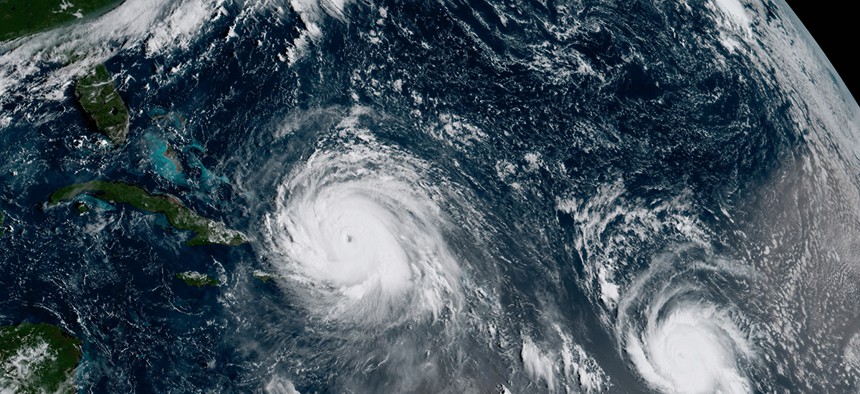National Forecasts Get Supercomputing Boost

NOAA/AP
Following the worst weather year ever, the federal government is investing heavily in supercomputing to improve forecasting.
The National Oceanic and Atmospheric Administration is boosting its supercomputing capabilities by one-third following the most expensive year ever for U.S. natural disasters.
NOAA, which oversees the National Weather Service, will finish a multiyear upgrade late this month, adding Dell hardware to existing IBM and Cray data centers in Virginia and Florida and analyze vast amounts of weather data from satellites and sensors.
The increased supercomputing capacity is expected to improve the accuracy of forecasts of hurricanes, blizzards, droughts and other weather events. Collectively, natural disasters cost U.S. taxpayers a record-breaking $306 billion in 2017, with hurricanes Irma and Harvey costing in excess of $150 billion together.
“NOAA’s supercomputers play a vital role in monitoring numerous weather events, from blizzards to hurricanes,” said Secretary of Commerce Wilbur Ross in a statement. “These latest updates will further enhance NOAA’s abilities to predict and warn American communities of destructive weather.”
For the technically inclined, the upgrade brings NOAA’s total operational computing speed to 8.4 petaflops, or one thousand trillion floating point operations per second. NOAA’s supercomputers will be among the 30 fastest supercomputing systems in the world and are designed to make use of a growing amount of data produced by next-generation satellites.
“NOAA’s supercomputers ingest and analyze billions of data points taken from satellites, weather balloons, airplanes, buoys and ground observing stations around the world each day,” said retired Navy Rear Adm. Timothy Gallaudet, Ph.D., acting NOAA administrator. “Having more computing speed and capacity positions us to collect and process even more data from our newest satellites—GOES-East, NOAA-20 and GOES-S—to meet the growing information and decision-support needs of our emergency management partners, the weather industry and the public.”
The upgrades also allow NOAA to implement the next-generation Global Forecast System—an advanced weather modeling system—in 2019. GFS will improve the resolution and speed of weather forecasts.



